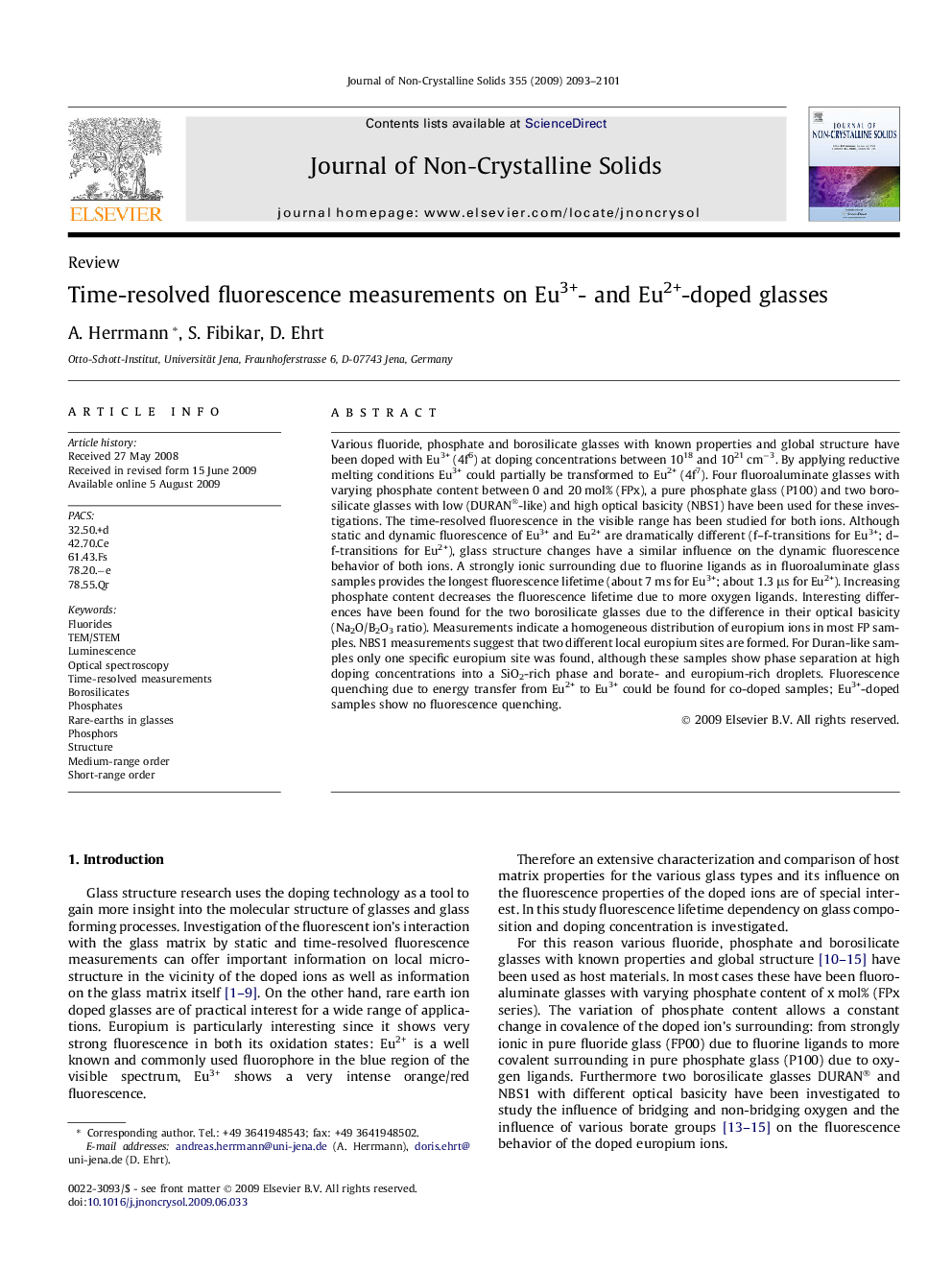| کد مقاله | کد نشریه | سال انتشار | مقاله انگلیسی | نسخه تمام متن |
|---|---|---|---|---|
| 1482236 | 1510507 | 2009 | 9 صفحه PDF | دانلود رایگان |

Various fluoride, phosphate and borosilicate glasses with known properties and global structure have been doped with Eu3+ (4f6) at doping concentrations between 1018 and 1021 cm−3. By applying reductive melting conditions Eu3+ could partially be transformed to Eu2+ (4f7). Four fluoroaluminate glasses with varying phosphate content between 0 and 20 mol% (FPx), a pure phosphate glass (P100) and two borosilicate glasses with low (DURAN®-like) and high optical basicity (NBS1) have been used for these investigations. The time-resolved fluorescence in the visible range has been studied for both ions. Although static and dynamic fluorescence of Eu3+ and Eu2+ are dramatically different (f–f-transitions for Eu3+; d–f-transitions for Eu2+), glass structure changes have a similar influence on the dynamic fluorescence behavior of both ions. A strongly ionic surrounding due to fluorine ligands as in fluoroaluminate glass samples provides the longest fluorescence lifetime (about 7 ms for Eu3+; about 1.3 μs for Eu2+). Increasing phosphate content decreases the fluorescence lifetime due to more oxygen ligands. Interesting differences have been found for the two borosilicate glasses due to the difference in their optical basicity (Na2O/B2O3 ratio). Measurements indicate a homogeneous distribution of europium ions in most FP samples. NBS1 measurements suggest that two different local europium sites are formed. For Duran-like samples only one specific europium site was found, although these samples show phase separation at high doping concentrations into a SiO2-rich phase and borate- and europium-rich droplets. Fluorescence quenching due to energy transfer from Eu2+ to Eu3+ could be found for co-doped samples; Eu3+-doped samples show no fluorescence quenching.
Journal: Journal of Non-Crystalline Solids - Volume 355, Issues 43–44, 15 October 2009, Pages 2093–2101